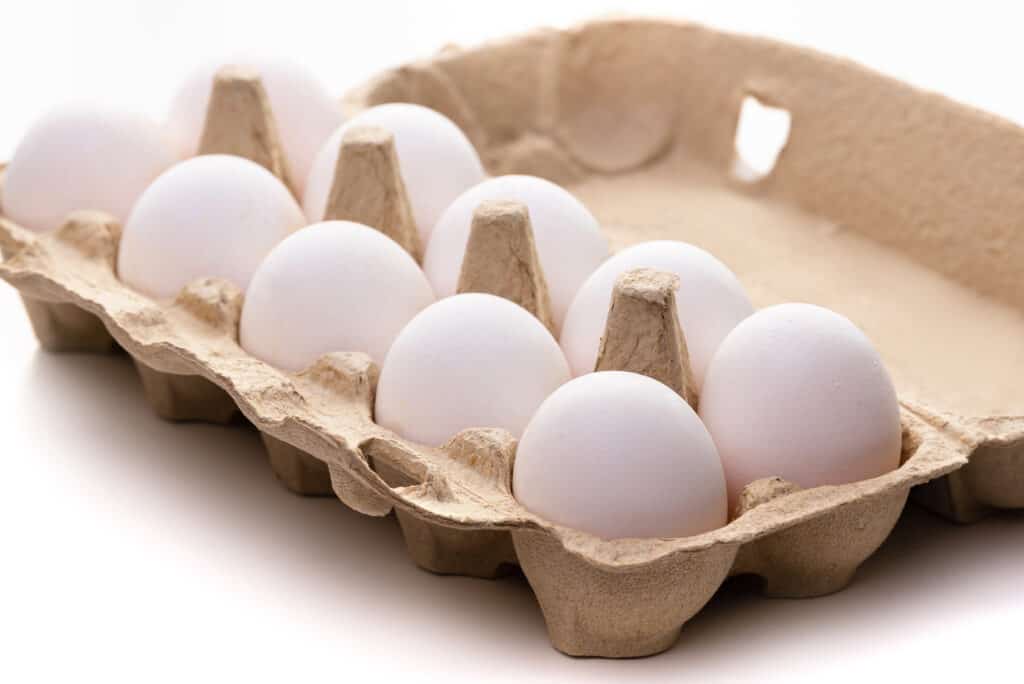Have you ever gone to a farm or a store and wondered why chicken eggs come in a range of colors? There are those with pearly white shells, looking clean and neat in a tray; others with the perfect nude shade; and some with a deep brown color resembling rich chocolate. Particular eggs can also be in fun blue or green colors, while some even have speckles on them. How do those happen? Is it magic or simply genetics? What does color tell about the qualities of an egg? Below, we uncover why chicken eggs come in all sorts of different colors, the genetics behind it, and more interesting facts.
Chicken Eggs
Eggs are one of the most common things to exist. They are produced by a variety of animals, such as birds, fish, reptiles, lizards, turtles, and insects, and by some mammals, such as the platypus and echidna. It is where life starts for most species. Chicken eggs, in particular, are accessible due to their abundance and low price in the market. It is a popular breakfast menu, a persisting food choice on the morning table. This is because it is easy to prepare and a rich protein source for such a small serving.
Aside from that, it is also a key ingredient in many recipes. Whether it is a tasty pastry or a healthy salad, eggs are present. It is also a popular emulsifying and thickening agent used in cooking. Eggshells are also utilized in arts and crafts – eggs are versatile like that.
Why Do Chicken Eggs Come in All Sorts of Different Colors?

The breed of a hen determines the kind of eggs it produces.
©Nataliya Schmidt/Shutterstock.com
Chickens come in a diverse amount of colors; and so do their eggs. The breed of a hen determines the kind of eggs it produces. Each breed contains a specific pigment or a mix of two, which affects the color of their eggs. The chicken’s earlobes also indicate the colors that its eggs would have. More often than not, those with lighter earlobes tend to have lighter feathers. Consequently, they are likely to have white eggs. On the other hand, those that have darker feathers are more likely to have darker eggs. Aside from the breed of the hen, some other factors affect the color of an egg. One example is its age; the older the hen becomes, the lighter the color of the egg it produces. Though the shade may change, its original color persists.
What Are Chicken Eggs Made Of?

Eggshells are made almost entirely of calcium carbonate.
©ANEK SANGKAMANEE/Shutterstock.com
All eggs start out white, and all eggshells are made almost entirely of calcium carbonate. It all starts in the hen’s ovary, where the chicken yolk or ovum is formed. When the yolk reaches the right size, it is released into the oviduct, an organ that resembles a tube and lies along the hen’s backbone between the ovary and the tail.
When the egg reaches the stage involving the development of its shell gland, the pigment is incorporated into the shell to produce its final color. The pigment deposited depends on the breed of the hen, which becomes the determining factor of the eggs’ colors.
What Colors Do Chicken Eggs Come In?

The Olive Egger is a product of a brown egg-laying breed of chicken and a blue egg-laying breed.
©Tabitha Sizemore/Shutterstock.com
The colors of eggs are not limited to the spectrum of white to brown. There are those with blue or even green color if the right amount of pigments is deposited onto the egg. White leghorn chickens lay eggs with white shells, while breeds such as Plymouth Rocks and Rhode Island Reds lay eggs with brown shells. This is because the latter breeds deposit a pigment called protoporphyrin onto their eggs, which causes the brown hue. It is incorporated in the shells in the late stages of shell formation and only influences the exterior. That is why brown eggs only have color in their outer shell while the inside remains white, which can be seen when peeled.
Ameraucana chickens lay blue eggs as they have a pigment called biliverdin. Their difference from the breeds first mentioned is that their color permeates the exterior and interior of the shell. Another type of chicken is the Olive Egger, a product of a brown egg-laying breed of chicken and a blue egg-laying breed. They produce a brown pigment that mixes with the blue pigment in the shell and results in olive-green eggs. Other similar breeds include Araucana, Dong-xiang, and Lushi, which all lay blue or blue-green eggs.
Are There Speckled Chicken Eggs?
Aside from the fun variety of egg colors, there are also those that display speckles. This is born from the disturbance that occurs in the egg-shaping calcification process, where the calcium deposits cause the eggs to have speckles on them. Another reason can also be that there is a defect in the shell gland of the speckled egg.
Conclusion
No matter what the labels say in grocery stores, the colors of the eggs occur naturally. Whether it is white or brown, blue or green, their pigments do not mean they are artificial in any way. It is simply due to the breed of hens that produce particular pigments which affect the shells of the eggs they lay. In terms of the nutritional value of the eggs, there is little to no difference between them. The color of the shell does not significantly influence the egg quality or composition. So, if you ever visit a farm again or need to have a grocery run, you do not have to worry about getting white or brown eggs. Ultimately, it all comes down to preference, as no one judges your egg choices.
Up Next:
Why Do Chickens Eat Their Own Eggs?
Duck Eggs vs Chicken Eggs: 5 Key Differences Explained
Quail vs. Chicken Eggs: Are Quail Eggs Better For You?
The photo featured at the top of this post is © iStock.com/Sonja Filitz
Sources
- Michigan State University, Available here: https://www.canr.msu.edu/news/why_are_chicken_eggs_different_colors
- Christopher Hassiotis, Available here: https://animals.howstuffworks.com/animal-facts/white-brown-green-chicken-eggs-whats-difference.htm
- AgriLife Today, Available here: https://agrilifetoday.tamu.edu/2022/04/11/why-are-eggs-different-colors/
- Healthline, Available here: https://www.healthline.com/nutrition/white-vs-brown-eggs#egg-colors
- Nulaid, Available here: https://www.nulaid.co.za/facts_uses.php
Thank you for reading! Have some feedback for us? Contact the AZ Animals editorial team.






